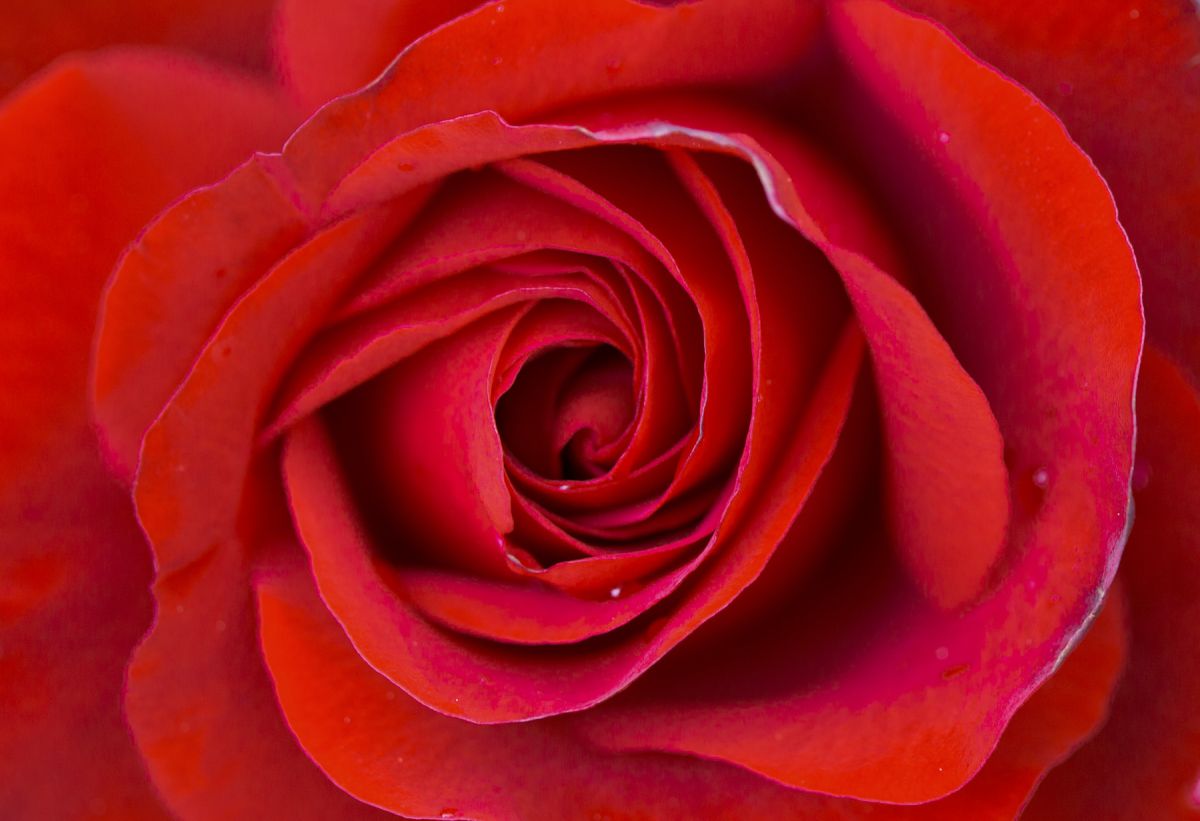[ad_1]
Flowers are the year-round subject that keep giving, but how can you make your photos stand out from the crowd?
Tools and requirements
Any camera; DSLR, mirrorless, smartphone
Lens with a variety of focal lengths
Whatever camera or lens that you own – even your smartphone – you’ll find some handy tips and creative techniques in this article to help your flower photography blossom.
Try a multiple exposure
There is a feature on your camera that you may not have used before, but it’s perfect for flower photography. Whether you use a DSLR, mirrorless, or point-and-shoot camera, it’s likely to offer a multiple exposure mode, and this feature allows you to shoot a specified number of frames, with the second and subsequent exposures superimposed over the preceding one. This technique originated during the days of film photography, but it’s far quicker and easier to try with a digital camera.
By taking two or more shots of flowers and overlaying them, you can create images with a whimsy, ethereal effect that lends itself well to forest scenes in particular. How you access and use this feature will differ between camera brands, but there are a few things you can try to maximize your chances of a great image. First up, take shots of two different flowers, rather than two frames of the same subject. Second, experiment with different orientations; so, for example, one frame in regular orientation and another at an angle.
Say hello to zoom burst
Zoom burst is a great technique to try with flower photography, and to create such an image you just need one essential item of kit: a zoom lens (sorry, no prime optics this time around). All you have to do is select Shutter Priority mode (S or Tv on your mode dial) and dial in a shutter speed that’s slow enough to give you time to twist the zoom ring on your lens during the exposure.
Focus up on your subject, and as you press the shutter button twist the zoom ring to zoom in, which will capture a zoom-blur effect. This technique requires a fair bit of trial and error to get right, but it enables you to create images with a real sense of dynamism. You can try zooming out as well as in, and the results can be both abstract and high-energy.
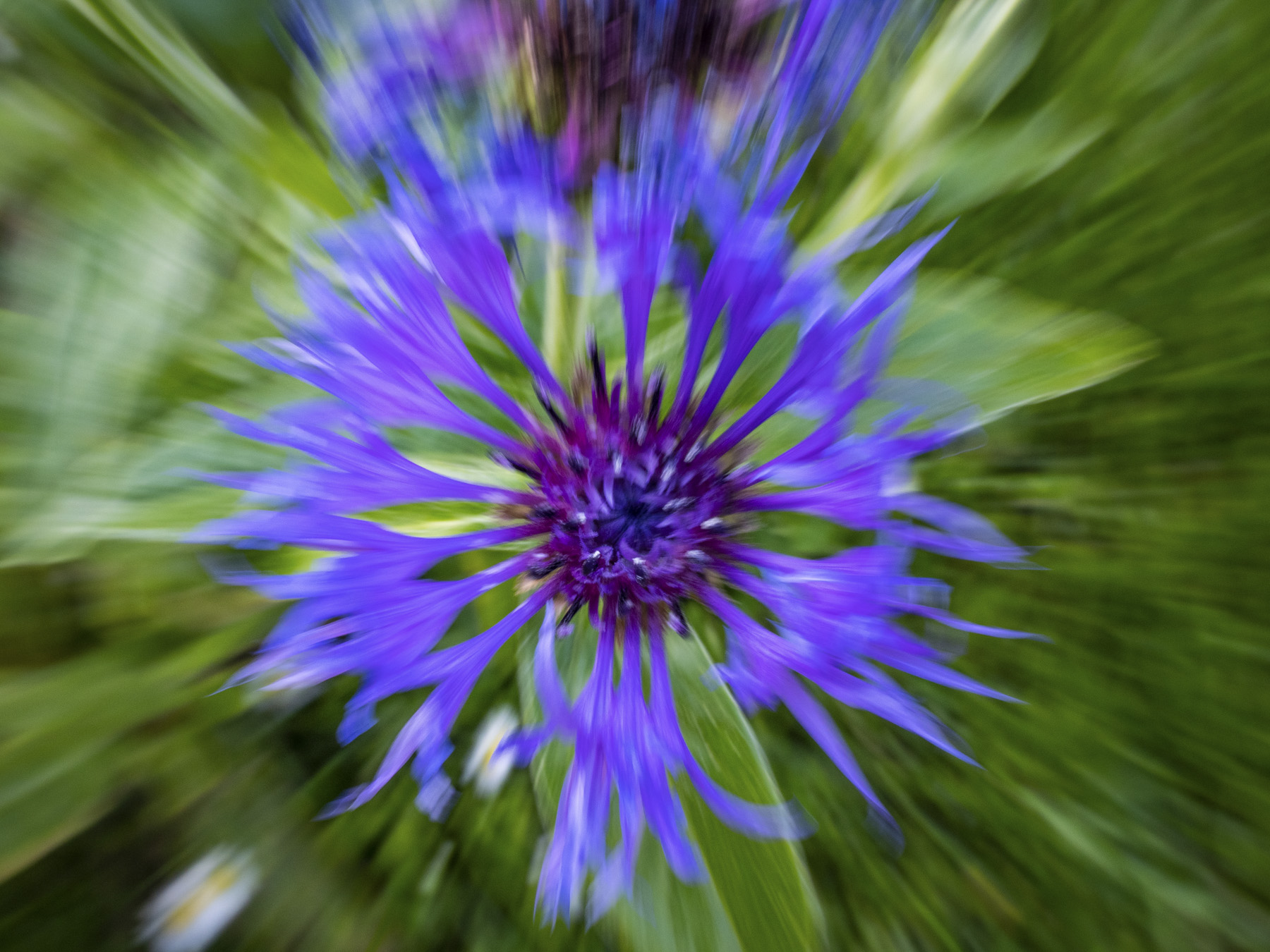
Show a worm’s-eye view
If there’s one piece of composition advice you should follow it would be” ‘never take a photo from head height’. Why? Well, because this is the view of subjects we’re all used to seeing, and by going higher or lower you can show a new view of a familiar subject. You can even go really low for a worm’s-eye view – placing the camera on or close to the ground and angling it up will create a genuinely fresh take on your flowery subject. You can handhold the camera for such shots, or for more control you could use a mini tripod.
If you only have a regular tripod that’s not a problem, as most models allow you to remove the center column and reinsert it upside down, so that your camera is close to the ground. Of course, this also means your camera will be upside down, but all you need to do once you’ve taken an image is flip it around in Photoshop. To exaggerate the worm’s-eye effect use a wide-angle optic – this technique works great with flowers that are just a few inches tall, such as bluebells or poppies, but you can try it with any subject.
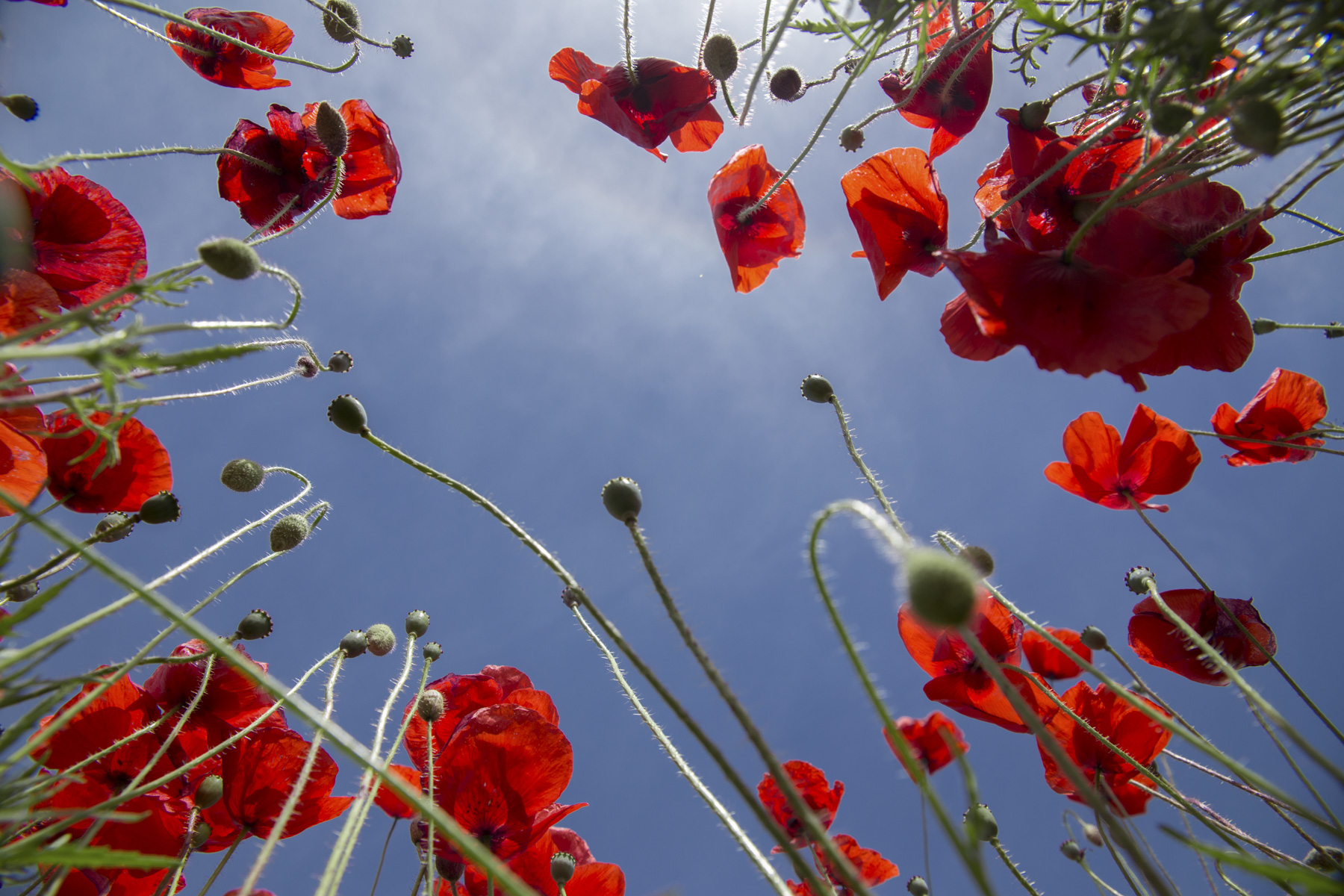
Sure up sharpness with a focus stack
One of the biggest challenges a photographer can face when shooting flowers is depth of field, which can be limited when you’re zoomed in on a flower, and even more so if you’re using a long lens with a compressed field of view, or a macro lens. So what’s the solution? Well, most cameras have a feature called Focus Stack (also called Focus Merge). In this mode the camera will shoot multiple images, changing the point of focus slightly between each frame. The frames will then be automatically merged in-camera (or you can do this manually back at your computer) to produce a final image with a much greater depth of field, meaning more of the subjects in the frame will be razor-sharp.
If your camera doesn’t have this mode, you can achieve similar results by placing the camera on a tripod so it stays static, then switch to manual focus and start shooting, changing the point of focus for each frame by rotating the zoom ring on the lens slightly. You can then merge these images in image-editing software such as Photoshop or Affinity Photo.
Shoot contre-jour
Newcomers to photography are often told to shoot with the sun at their backs, but as ever with photography, rules are meant to be broken. Contre-jour is a French term that translates to ‘against the light’, and what this means for taking photos of flowers is that you turn your lens towards the light and make a feature of the sun, which can add drama and atmosphere to your shots.
You’ll need to take care when employing this technique, and only use it in the right conditions, as shooting into the light can cause issues such as flare and ghosting, although if flare is carefully controlled, the colorful artifacts caused by sunlight bouncing around inside the lens can add a lovely ethereal quality to flower images. An obvious fix to prevent flare is to add a lens hood – even if your lens didn’t come with one, you can always buy a generic hood to match the filter thread of your lens.
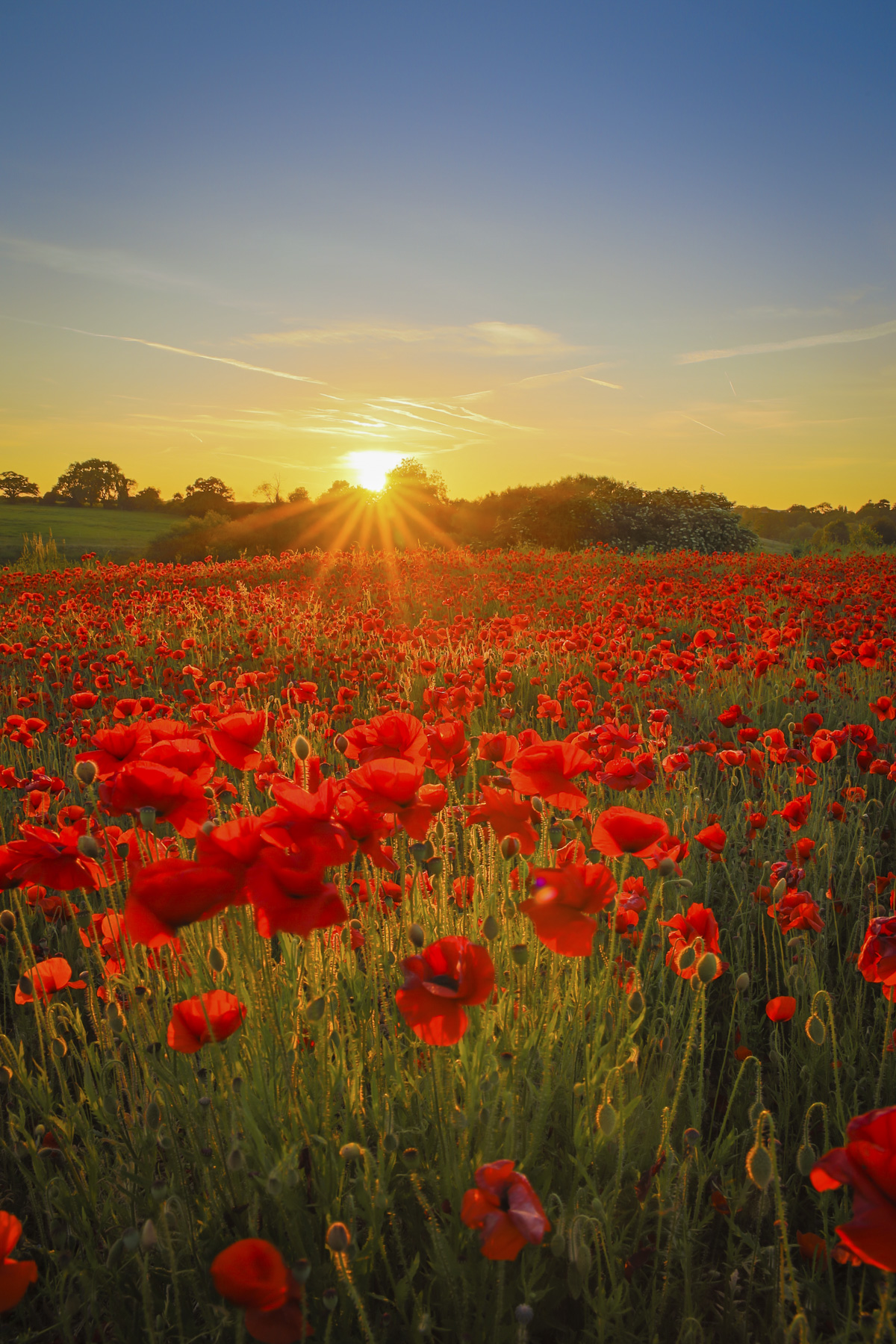
Fill the frame
When greeted with a field full of flowers it can be tempting to opt for a wide focal length (say, 18mm on your kit lens) and try to capture as much of the scene as possible. One of the problems with this approach is that small flowers can look completely lost in the frame, and a better approach is to swap out that wide-angle lens for a telephoto zoom, and zoom in to fill the frame with your subject.
Scenes such as fields full of sunflowers, poppies or tulips can work really well with this approach, but there are a couple of things to remember. When you’re using longer focal lengths camera shake becomes more of an issue, so check that you’re using a fast enough shutter speed to eliminate the risk of shake. As a general rule, don’t let your shutter speed drop below the focal length you’re using – so for example, if you’re using a lens set to 200mm, don’t let your shutter speed drop below 1/200 sec. Lenses fitted with image stabilization technology will also help keep shots sharp, as will using a monopod or tripod to support the camera.
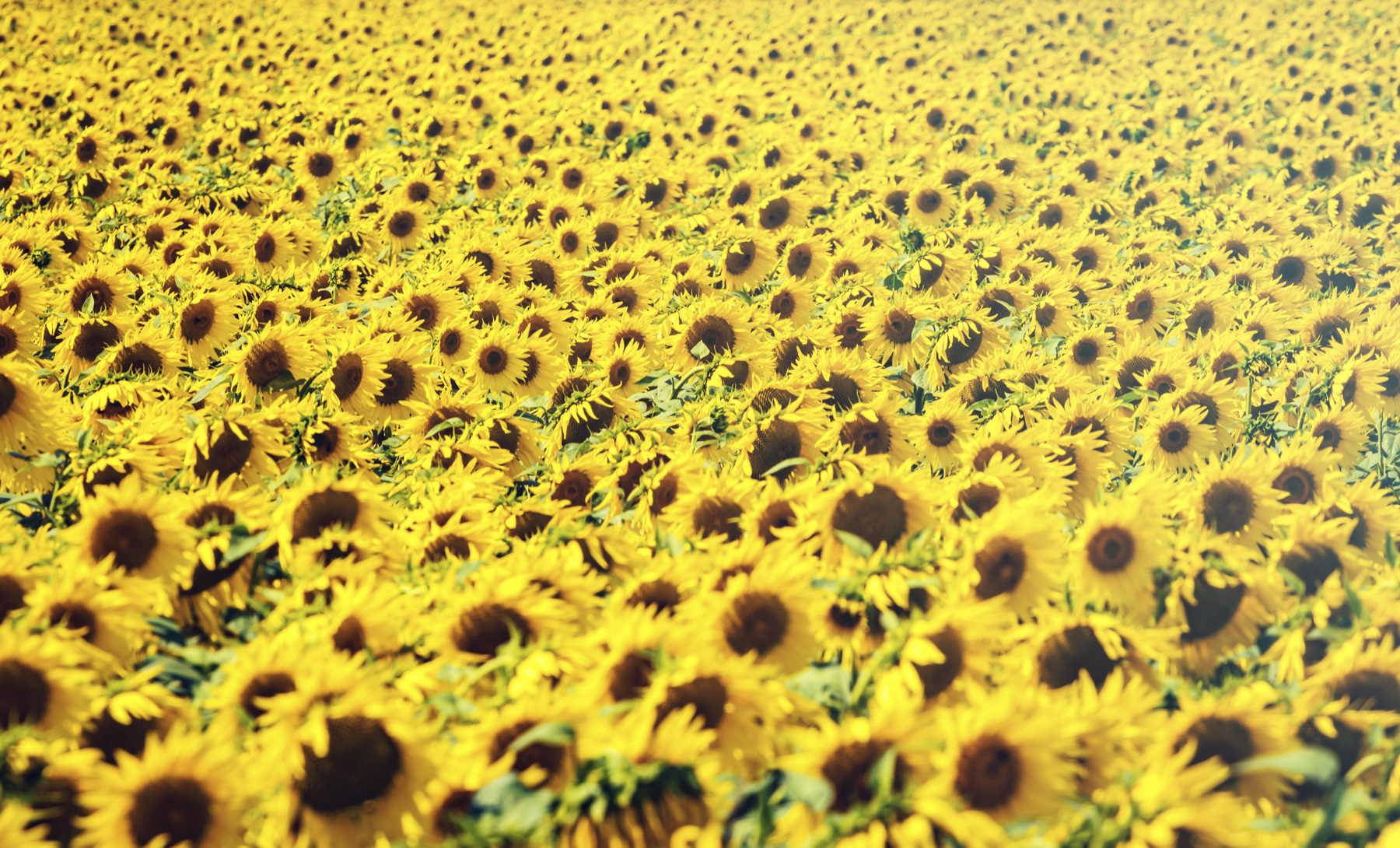
Final Thoughts
When it comes to flower photography, the huge variety of species, shapes and colors means you’ve got plenty of scope for varying your style, approach and framing, making it easy to put together a varied and attractive portfolio. Use our six tips as a framework, but remember to break free of the rules, and experiment with different approaches and styles visions to capture your own takes on this fun and rewarding genre.
[ad_2]
